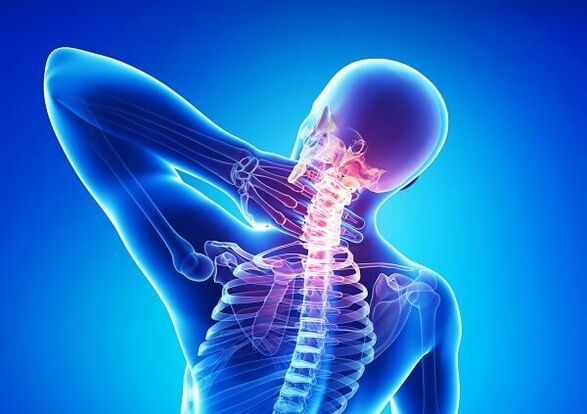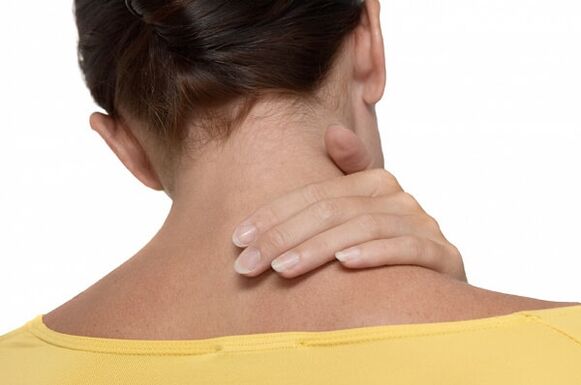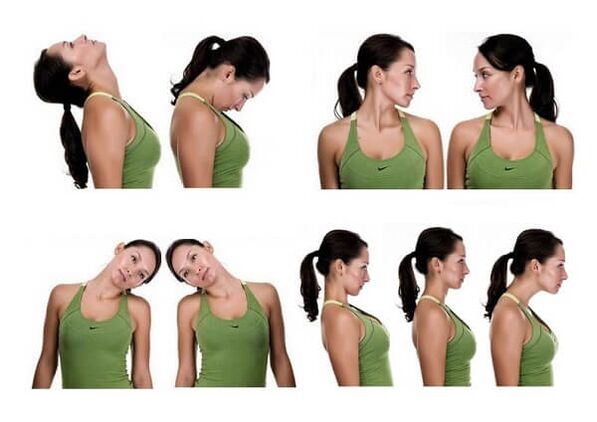
Cervical osteochondrosis can be called one of the most common pathologies of the spine today. At the same time, according to statistics, more and more young people suffer from this degenerative disease, previously it was believed that osteochondrosis occurs only in older people. It is important to know about the symptoms of cervical osteochondrosis and treatment at home, because the sooner the pathology is detected and treatment is started, the less likely it is that complications will occur.
Cervical osteochondrosis is a degenerative disease of the cervical spine in which the intervertebral disc is destroyed. The pathology progresses very slowly, but we must not forget that most degenerative changes are irreversible.
Stages of the disease
The following stages of cervical osteochondrosis differ from the initial changes, which practically do not cause pain and other symptoms, in order to completely destroy the intervertebral disc:
- Pre-clinic stage. There are no visible signs of degenerative changes at this stage, they occur at the biochemical level. The patient does not experience pain or any other change in condition.
- Increased stage of degenerative changes in the pulposus nucleus. Changes in the pulposus nucleus lead to stabilization of the cervical spine, there are disorders in the structure of the fibrous disc. The patient begins to experience mild pain and other symptoms.
- The stage of complete destruction of the annulus fibrosis. There is a dislocation of the intervertebral disc - the nucleus pulposus begins to protrude beyond the destroyed ring fibrosis, there are displacements and subluxations of the cervical vertebrae. Pain syndrome and other symptoms of the disease increase significantly.
- The stage of tissue regeneration of the intervertebral disc. The pulposus nucleus begins to be replaced by fibrous tissue, intervertebral disc scar tissue and adjacent structures of the spine are involved in degenerative processes. With the development of intervertebral disc fibrosis, pain and instability disappear, but this does not mean recovery.
It is important!Periodically, exacerbations of the disease can occur, usually with increasing symptoms after physical exertion.
The sooner treatment of the disease begins, the easier it is to stop the degenerative changes. At the same time, the clinical manifestations of cervical osteochondrosis vary, it is often impossible to diagnose the disease without a complete diagnosis, X-ray, MRI or CT.
Symptoms
The main difficulty in diagnosing cervical osteochondrosis is insufficiently expressed and not obvious symptoms. In addition to pain syndrome, there are many herbal symptoms that can speak to diseases of the nervous or circulatory system, so misdiagnosis often leads to the diagnosis of osteochondrosis.
Vegetative symptoms in men are often considered less severe than pain. Perhaps this is because men are less likely to see a doctor with symptoms of neurological disease. In women, the vegetative symptoms associated with the emotional sphere are considered more pronounced.
In general, the following symptoms generally refer to the main symptoms of cervical osteochondrosis and should all be present at the same time:
- Pain syndrome. The pain occurs in the neck and shoulders, spreads to the shoulder blades. It can also spread to the back of the head. You may also experience headaches and dizziness with osteochondrosis.
- Herbal symptoms. It occurs in the back of the neck due to the constriction of nerve endings and blood vessels in the cervix. Symptoms include headache, dizziness, nausea, palpitations, and panic attacks.
- In the upper parts, numbness in the shoulder blades, limited mobility. This symptom also occurs due to compressed nerve endings in the cervical spine.
These are the main symptoms of cervical osteochondrosis, and often the pain syndrome is so mild that the cause of the discomfort begins to be sought in the field of neurology.

How to treat cervical osteochondrosis at home
Home treatment of cervical osteochondrosis is possible in the early stages of the disease. Therapy should be comprehensive, covering pain medications, therapeutic exercises, massage and a number of other procedures. Each component of therapy is important to complete recovery.
Medication
Starting with non-steroidal prescription drugs, painkillers are generally required. If such drugs do not help, they use a blockade - injections with anesthetics at the site of the lesion.
Topical corticosteroid ointments may also be used. Care should be taken in their use, as they can be harmful if used irrationally. Such funds are strictly prescribed by prescription; its use is prohibited.
In addition, tools can be used to improve the blood supply to the brain with severe vegetative symptoms. They are rarely appointed. Sometimes, in addition to these, daytime diluents are used to help relieve the depressive symptoms caused by nerve ending compression.
Massage
With osteochondrosis, cervical spine massage is important, it helps to restore blood circulation and relieve tension from tense muscles. Several different massage techniques are used, self-massage is allowed at home, to do this you need to tilt your head forward in a sitting position, put your hands on both sides of your neck.
It is important!Under no circumstances should you put pressure on the spine, otherwise the pain syndrome may worsen.
With stroking movements, you should move from under the head to the shoulders, try to push, but it will not cause pain. The procedure should last 10 to 15 minutes.
Gymnastics
For cervical lumbar osteochondrosis, exercise is extremely important to maintain muscle tone and cervical spine mobility. The neck muscles need to be trained with this disease.
The simplest exercise is to put your hands under your chin in a sitting position and press lightly upwards. At the same time, you need to resist head pressure. Training should be done for fifteen seconds, increasing over time.

Diet
With osteochondrosis, it is recommended to start eating more properly and include more fresh vegetables and fruits in the diet. It is recommended to eat more seafood and fermented dairy products to increase the amount of substances needed for the normal functioning of the musculoskeletal system.
Treatment with folk remedies
Folk remedies are not so effective in the treatment of cervical osteochondrosis, but there are several recipes that will help with this disease. First of all, various compressors are recommended, one of the most effective is potato based. Raw potatoes need to be grated, add a spoonful of honey, put on a sore spot, cover with cling film.
Potatoes can be replaced with unleavened dough. In the absence of inflammation, the compress can be covered with a warm cloth for greater effect. During the massage, you can also lubricate the cervical region with honey, and thus arrange a rub, honey provides the best effect.
You can get the best results with a combination of folk remedies and other treatments.


















































